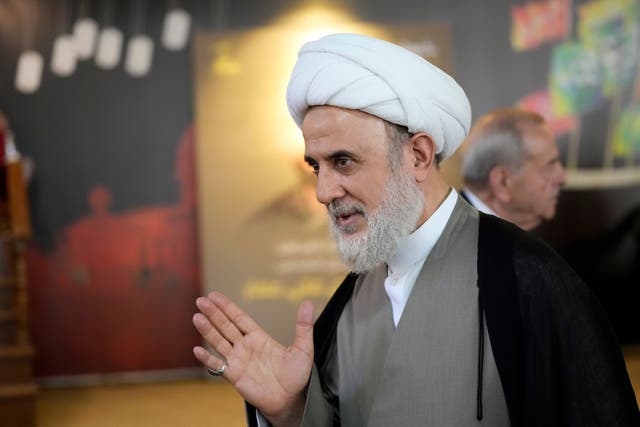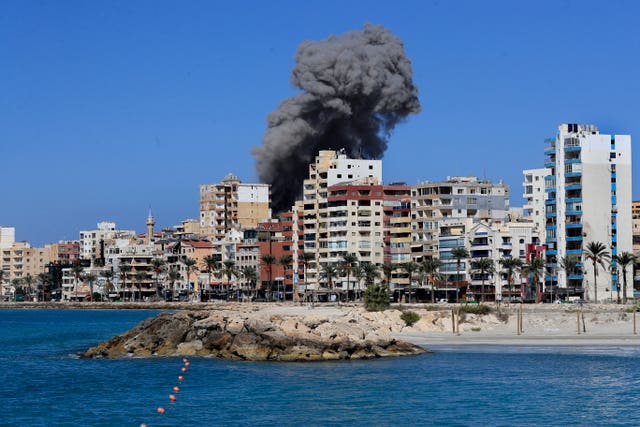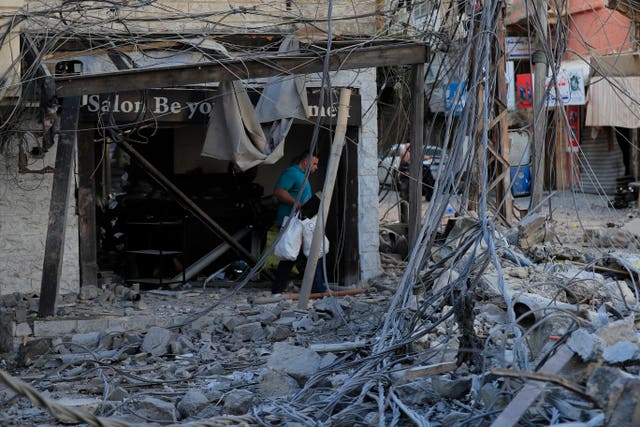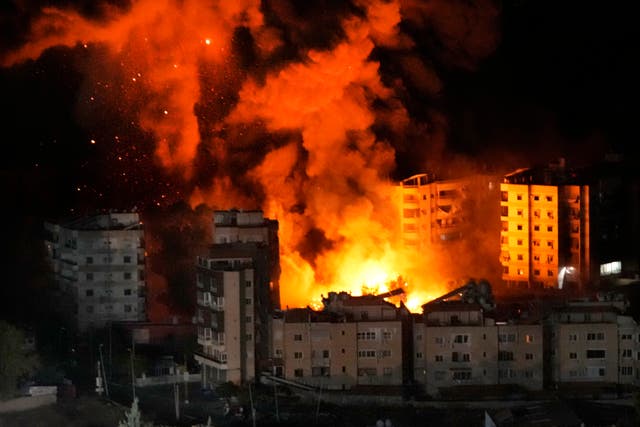Hezbollah confirms death of senior cleric Hashem Safieddine in Israeli strike
The powerful cleric had been expected to succeed Hassan Nasrallah, who was killed in an Israeli strike last month.

Hezbollah has announced that Hashem Safieddine, one of its leading officials who had been widely expected to be the group’s next leader, was killed in an Israeli air strike.
The announcement came a day after Israel said it had killed Safieddine in a strike earlier this month in Beirut’s southern suburbs.
Mr Safieddine, a powerful cleric in the party ranks, had been expected to succeed Hassan Nasrallah, one of the group’s founders, who was killed in an Israeli air strike last month.

Hezbollah’s statement said Mr Safieddine had “joined his brother, our most noble and precious martyr”, Mr Nasrallah.
Israeli strikes have killed much of Hezbollah’s top leadership over recent weeks.
Mr Safieddine, who was about 60, was Mr Nasrallah’s maternal cousin and had spent years preparing for the position as leader.
A black-turbaned cleric with a thick grey beard, he was known for defiant speeches in which he vowed that Hezbollah would keep fighting Israel no matter the price.
He was a member of the group’s decision-making Shura Council and its Jihad Council, which acts as its military command. He also headed its Executive Council, which runs schools and social programmes.
Despite the lack of formal announcement following Mr Nasrallah’s death, it was widely known that Safieddine was already in control and running the group’s affairs, although the official acting leader was his deputy, Naim Kassem.

It is not clear who will end up taking Hezbollah’s top job now, especially since another leading candidate, Nabil Kaouk, was also killed in an Israeli strike hours after Mr Nasrallah’s death.
Meanwhile, Israeli jets struck multiple buildings in Lebanon’s southern coastal city of Tyre on Wednesday, sending up large clouds of black smoke.
The state-run National News Agency reported that an Israeli strike on the nearby town of Maarakeh killed three people. There were no reports of casualties in Tyre, where the Israeli military had issued evacuation warnings before the strikes.
Hezbollah fired another barrage of rockets into Israel, including two that set off air raid sirens in Tel Aviv before being intercepted.
A cloud of smoke could be seen in the sky from the hotel where US secretary of state Antony Blinken was staying on his latest visit to the region to try to renew ceasefire talks.

On Wednesday night, the Israeli military said another four “projectiles” had crossed from Lebanon into Israel, with two intercepted and one falling in open land. There were no immediate reports of any injuries, the military added.
Hezbollah began firing rockets, missiles and drones into Israel, drawing retaliatory air strikes, after Hamas’s attack on October 7 last year triggered the war there.
All-out war erupted in Lebanon last month, and Israeli strikes killed Mr Nasrallah and most of his senior commanders. Israeli ground forces invaded southern Lebanon at the beginning of October.
Tyre, a provincial capital, had largely been spared in the Israel-Hezbollah war but strikes in and around the city have intensified recently.
The 2,500-year-old city, about 50 miles south of Beirut, is known for its pristine beaches, ancient harbour and imposing Roman ruins and hippodrome, a Unesco World Heritage Site. It is among Lebanon’s largest cities and a vibrant metropolis popular with tourists.

The buildings struck on Wednesday were between several heritage sites, including the hippodrome and a cluster of seaside sites associated with the ancient Phoenicians and the Crusaders.
The Israeli military issued evacuation warnings a couple hours beforehand for dozens of buildings in the heart of the city. It told residents to move north of the Awali River, dozens of miles to the north.
Avichay Adraee, an Israeli military spokesman, said there were Hezbollah assets in the area of the evacuation warning.
The city is in southern Lebanon, where the Shiite Muslim Hezbollah has a strong presence, and its legislators are members of the group or its allies, but Tyre is also home to civilians with no ties to the group, including a sizable Christian community.
First responders from Lebanon’s Civil Defence used loudspeakers to warn residents to evacuate the area and helped older adults and others who had difficulty leaving. Ali Safieddine, the head of the Civil Defence, told the Associated Press there were no casualties.

Dr Wissam Ghazal, a health official in Tyre, said the strikes hit six buildings, flattening four of them, about two and a half hours after the evacuation warnings. People displaced by the strikes could be seen in parks and sitting on the sides of nearby roads.
The head of Tyre’s disaster management unit, Mortada Mhanna, told the AP that although many people had fled, thousands of residents and others who have been displaced from other areas have chosen to stay in the city. Many people, including hundreds of families, previously had fled villages in south Lebanon to seek refuge in shelters in Tyre.
An estimated 15,000 people remain in the city out of a pre-war population of about 100,000, Mr Mhanna said.
On Wednesday night the pan-Arab TV channel Al-Mayadeen, which is politically allied with Hezbollah, said the Israeli military had struck its office building on the outskirts of Beirut’s southern suburbs.
“Al-Mayadeen holds the Israeli occupation accountable for the attack on a known media office for a known media outlet,” the TV station said. It added that the office had been evacuated. The Israeli army did not issue a warning before the strike.

On November 21, an Israeli strike in southern Lebanon killed two Al-Mayadeen journalists reporting on military activity along the border with Israel.
Lebanon’s Health Ministry said 28 people had been killed and 139 wounded over the past 24 hours, raising the death toll since the conflict began last year to 2,574, with 12,001 wounded.
The fighting has driven 1.2 million people from their homes, including more than 400,000 children, according to the UN children’s agency.
On the Israeli side, attacks have killed around 60 people, half of them soldiers. Near-daily rocket barrages have emptied communities across northern Israel, displacing 60,000 people.
In recent weeks Hezbollah has extended its range, launching scores of rockets every day and regularly targeting the northern Israeli city of Haifa. Most of the projectiles are intercepted or fall in open areas.





